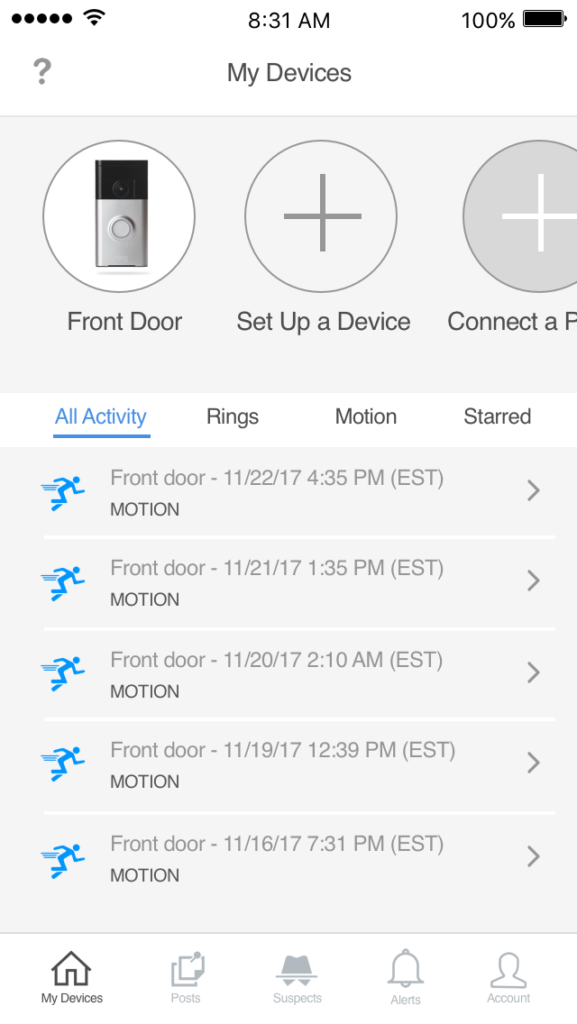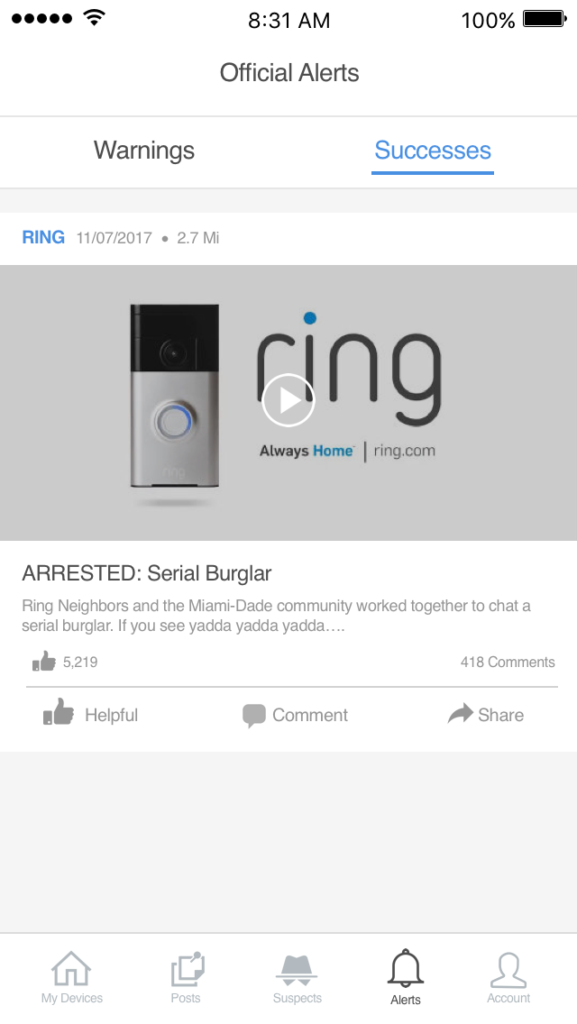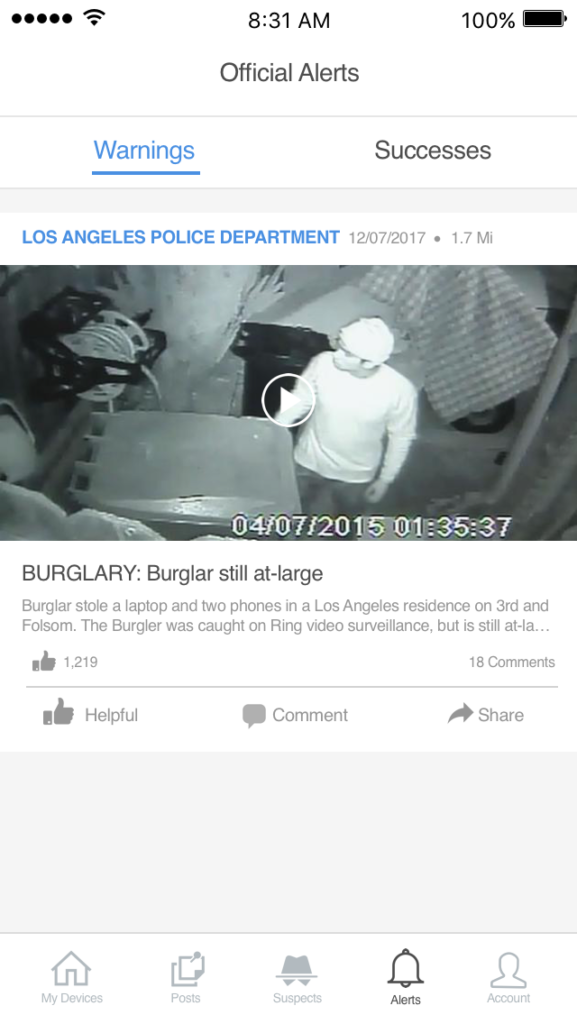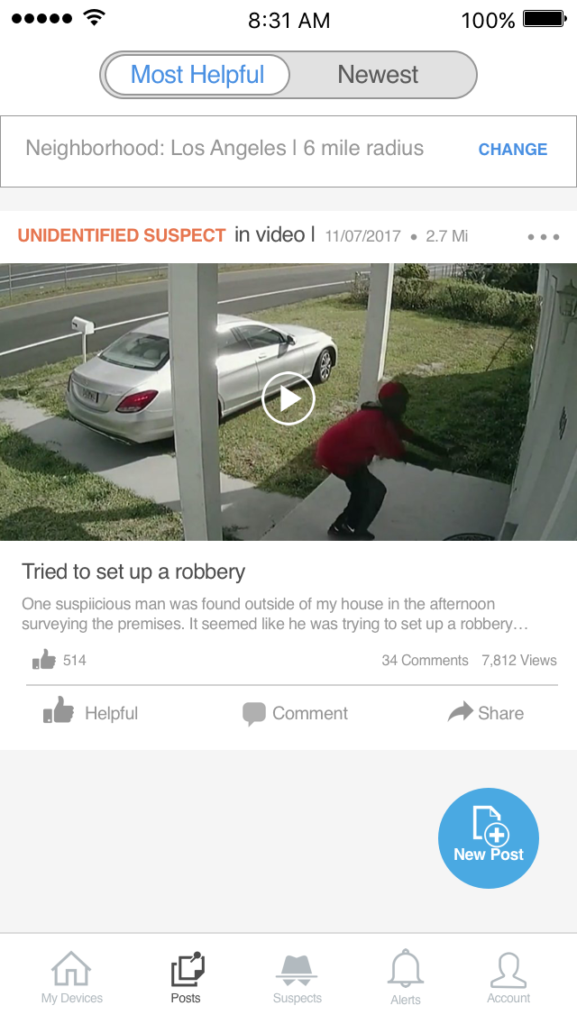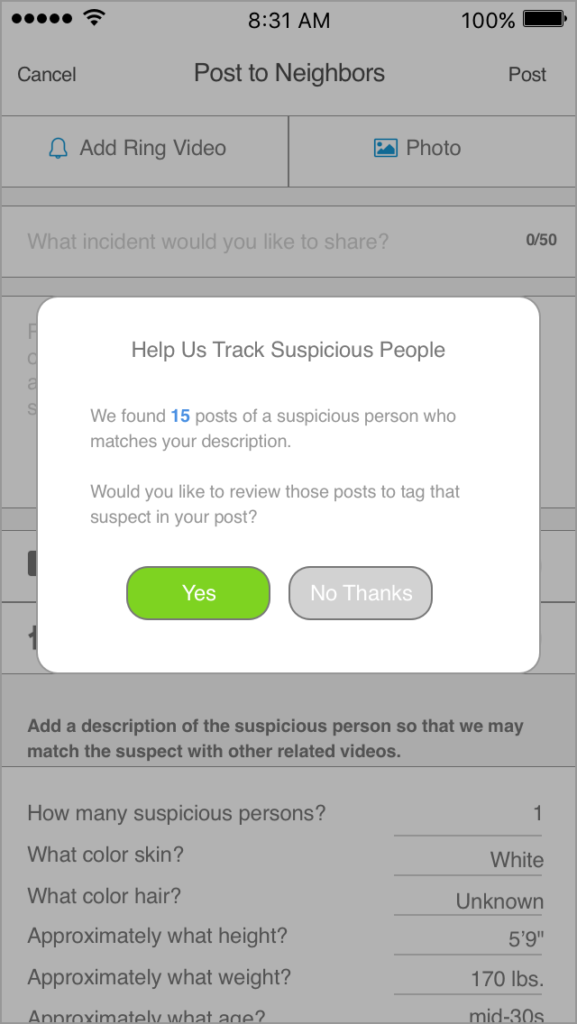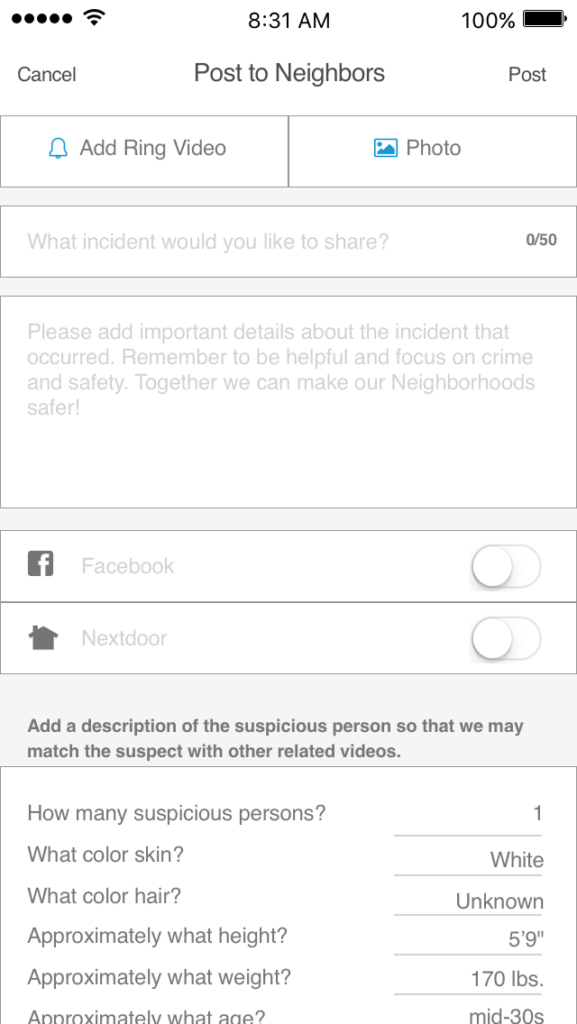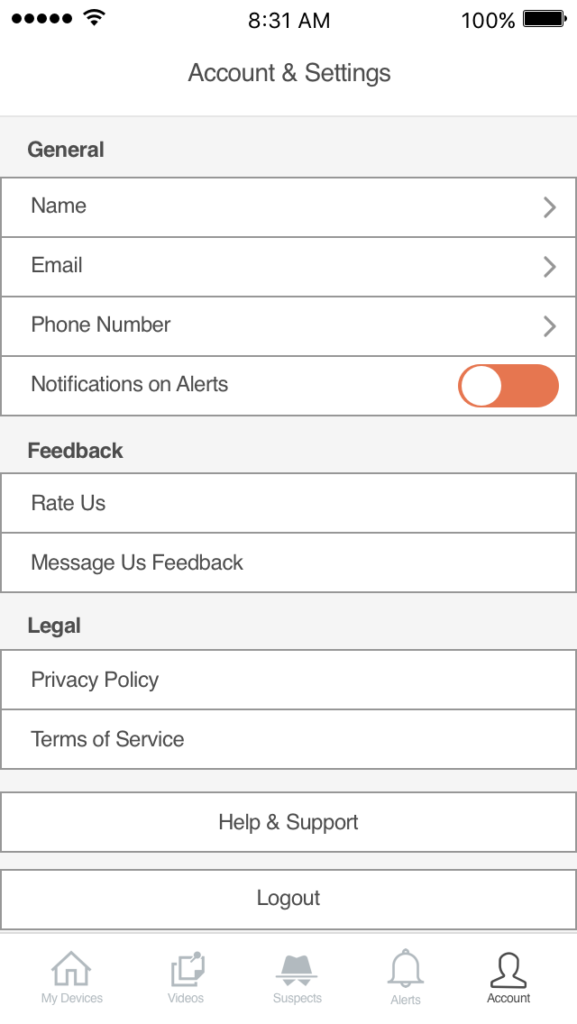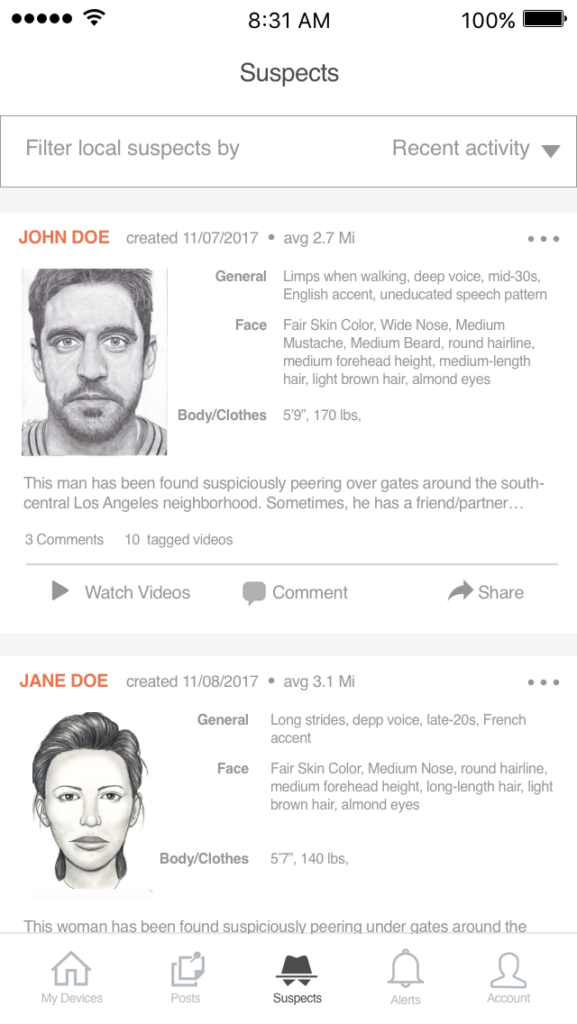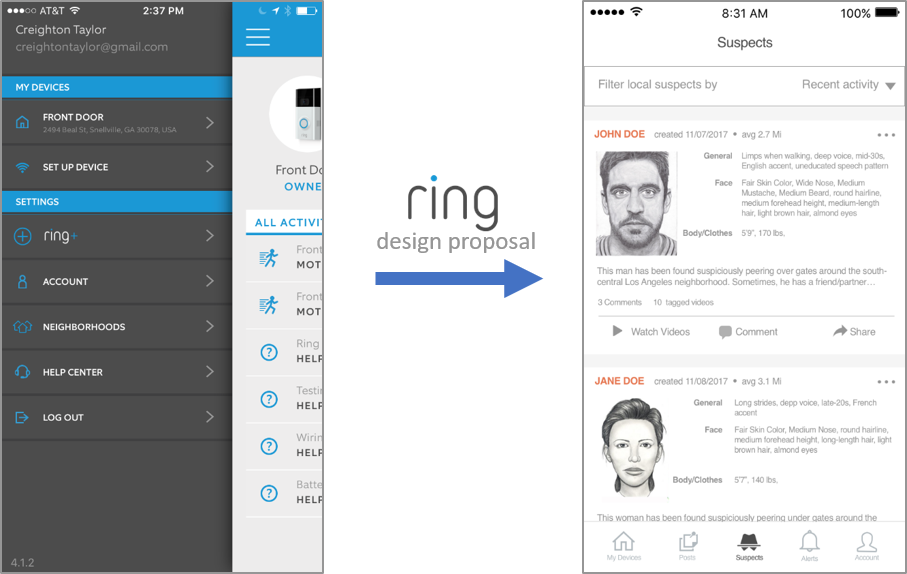
*Aaron Rodgers sketch above is from hilarious Lockerdome post
An Analysis of Ring Video Doorbell – Neighborhoods
December 21, 2017
Several members of my family own a Ring Video Doorbell and have loved the product. It brings added security and convenience to our households. Looking at the app, however, I thought I would structure it a bit better to highlight its incredible neighborhoods feature. In this write-up, I analyze Ring and propose some design changes to the product to do just that.
My Understanding
Ring’s mission is to “reduce crime in communities,” and it does so through both crime prevention and detection in and around personal homes. In fact, Ring partners with local police departments to fight crime. Ring has raised over $200MM to date along with booming sales and is looking to rapidly expand its dominance in the market.
The Ring mobile app accompanies video doorbells, cams, and chimes available for purchase, allowing for two-way communication, motion surveillance, and doorbell ring tracking/surveillance. The mobile app also allows for posting and viewing posts within their neighborhood and connecting to its partner home smart devices.
Initial Analysis
Since Ring’s mission is to reduce crime in communities I sought to analyze what crime in communities looks like today. Here are the highlights:
- 88% of all burglaries are residential (home) in nature
- 77% percent of all crimes are property crimes
- According to the FBI, a home burglary occurs every 13 seconds in the U.S.
- The front door is the most common entry point for burglars, at 34%
- 1 out of 3 residential assaults are a result of a burglary
That said, homes without security systems are 300% more likely to be broken into and burglars target homes with precautions not taken. These statistics show that Ring really is positioned to have a strong effect on crime in communities.
The following are the goals that Ring users may have ordered by importance:
- Home security of family and self
- Convenience of avoiding unwanted visitors and greeting wanted visitors
- Entertainment
The Ring product satisfies all three of these goals:
- Home security through surveillance, preventing and detecting break-ins
- Convenience through its two-way communication and partnerships with smart locks
- Entertainment through its Ring Neighborhoods feed, often showing prowlers around the area
However, I think that each of these areas could be satisfied better. I took a brief look at the competitors within the space to see how they compare with satisfying these user goals:
- Skybell Video Doorbell (http://www.skybell.com/)
- Nest Cam Outdoor (https://nest.com/cameras/nest-cam-outdoor/overview/)
- Canary Flex (https://canary.is/flex/)
- Arlo Pro 2 (https://www.arlo.com/en-us/products/arlo-pro-2/default.aspx)
- August Doorbell Cam Pro (http://august.com/products/doorbell-camera/)
- Amazon “smart” doorbell? (https://www.amazon.com/)
Most competitors look like a worse version of the Ring app. Nest and Amazon are worth keeping an eye on more so because of their dominance in other areas of the smart home and resources, than because of their current products in Ring’s space.
Two competitors have a foothold in markets that Ring may consider entering in the future:
- Arlo. Arlo also stresses the benefits of monitoring rooms inside of the home, unlike Ring which seems to focus more on outside monitoring. One of their cameras is a baby camera.
- August. Instead of partnering with smart locks liked Ring, August has developed its own smart lock that accompanies their video doorbell. While this increases convenience, it also increases risk of a security breach.
Ring’s unique space compared to competitors is its neighborhoods feature, which has a lot of potential. Yet today, it doesn’t seem to be highlighted in the app and the feature set could be enhanced. I think that Ring can engage neighborhoods to better satisfy its mission and user goals.
Proposed Changes
Appendix A provides screenshots of the current Ring app. I designed a different Ring app in Appendix B using Sketch. The designs are not meant to be a scaled down MVP, as the “suspect profile” functionality alone can easily become quite the project. Instead, the designs are meant to depict a roadmap that I believe can ultimately increase sales, retention, and referrals. Features from this proposal should be isolated and prioritized when implementing.
The proposed screens introduce a few changes in product design and more functionality:
- Tab bar instead of side navigation to improve navigation and highlight neighborhoods feature.
- Higher neighborhoods visibility by taking it out of the “devices” section and dedicating several tabs to information to it.
- Ability to toggle between neighbor posts that are “newest” and “most helpful.”
- Ability for users to provide descriptions of suspicious persons (“suspects”) and tag the suspect in other videos.
- Ability to have an isolated view of suspects filtered by recent activity, proximity, or starred.
- Ability to view official alerts from Ring or local police that serve as warnings for the community.
- Ability to view global successes from Ring in the official alerts tab.
Today, the neighborhoods feed seems to work somewhat similar to an Instagram feed sharing posts in reverse chronological order. But the primary goal of the user is not the same. While some may browse the feed for hours for entertainment, most will be using the service with the goal of ensuring that their neighborhood is safe.
In my proposed designs, the user can explicitly prioritize that they want to see the most helpful posts and actively help by tagging suspicious persons. A “suspects” tab allows users to more easily recognize suspect individuals at their door. A “suspect” profile can come from a user’s description from Ring video or directly from the local police department. Finally, an official alerts tab allows the users to discern alerts that are of higher priority. For those who want to be entertained, I suspect that the “Success Stories” section of the app is a place users can spend hours watching entertaining videos of creeps being caught. These success stories wouldn’t be limited to the neighborhood so that stories can accumulate like the Ring Facebook page.
Appendix A – Ring Mobile App as of December 15, 2018
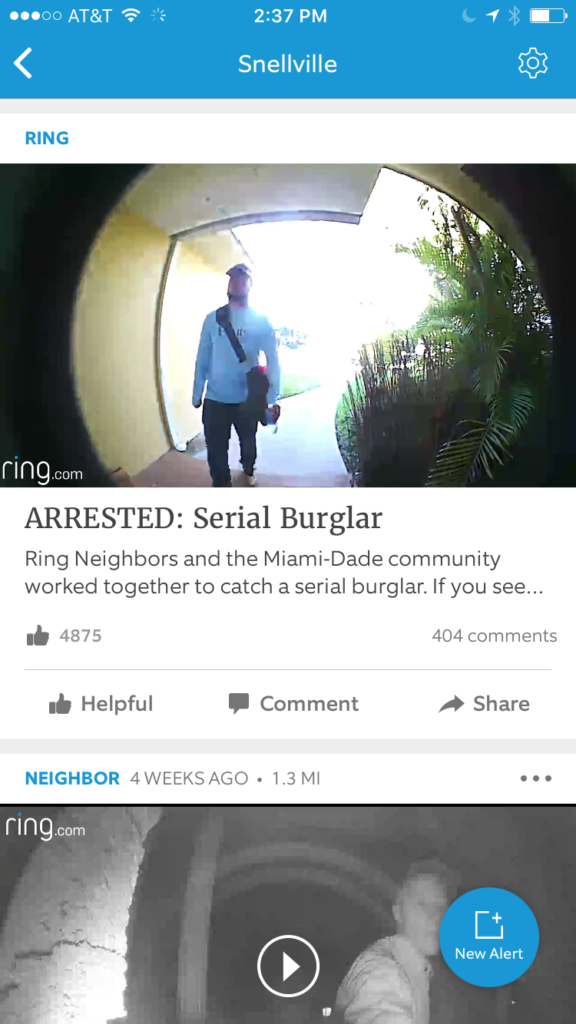
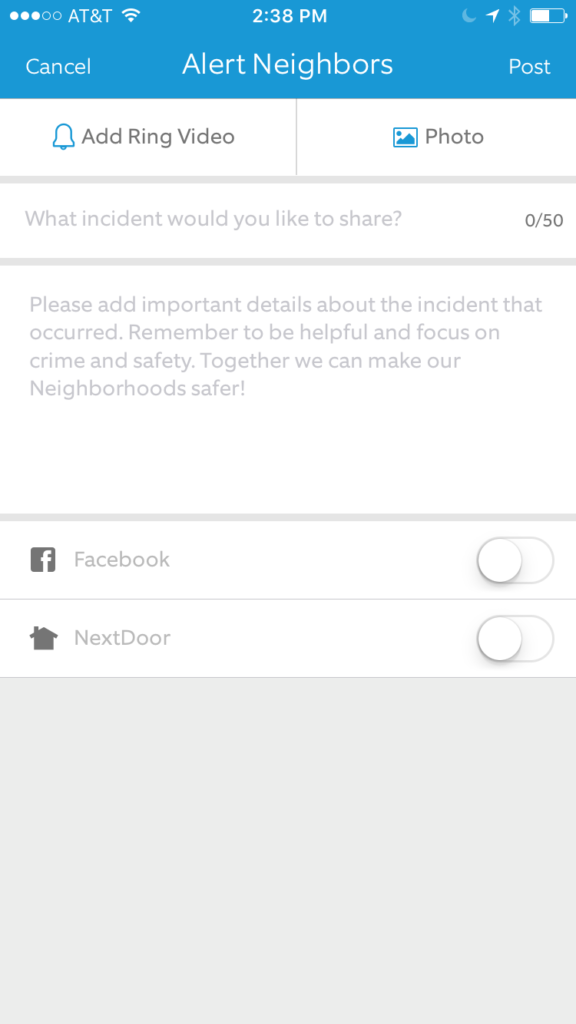
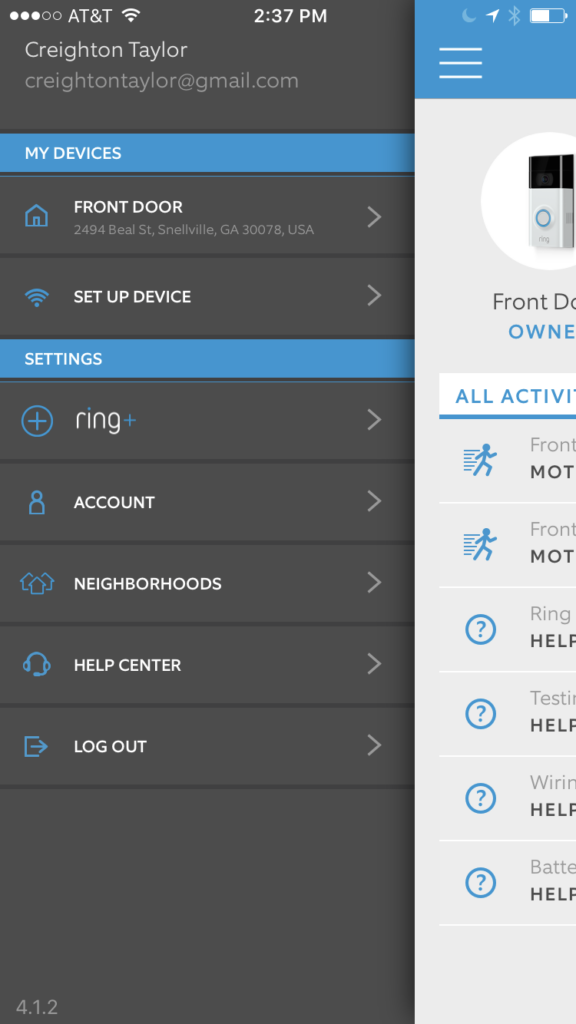
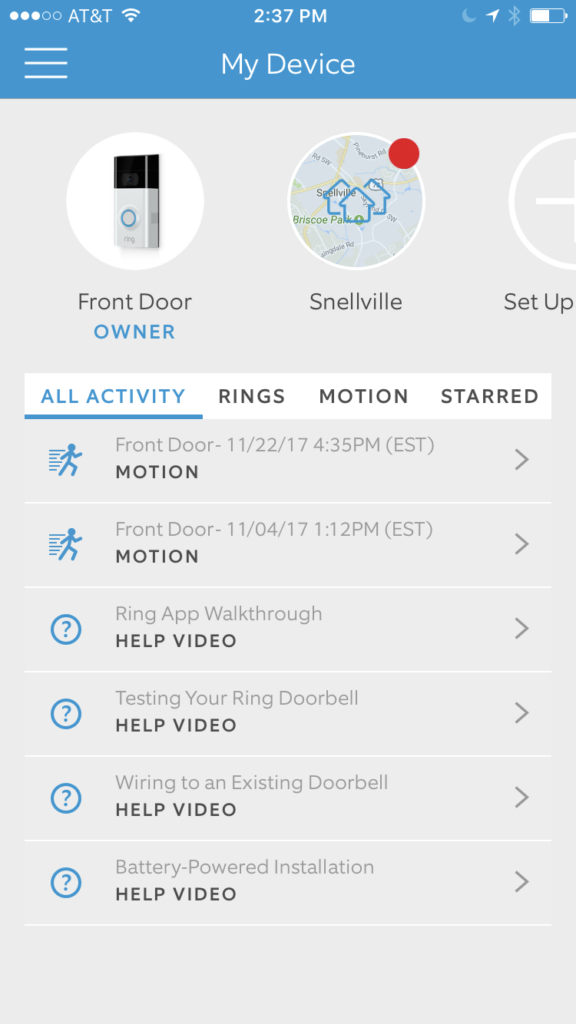
Appendix B – My Ring Designs
